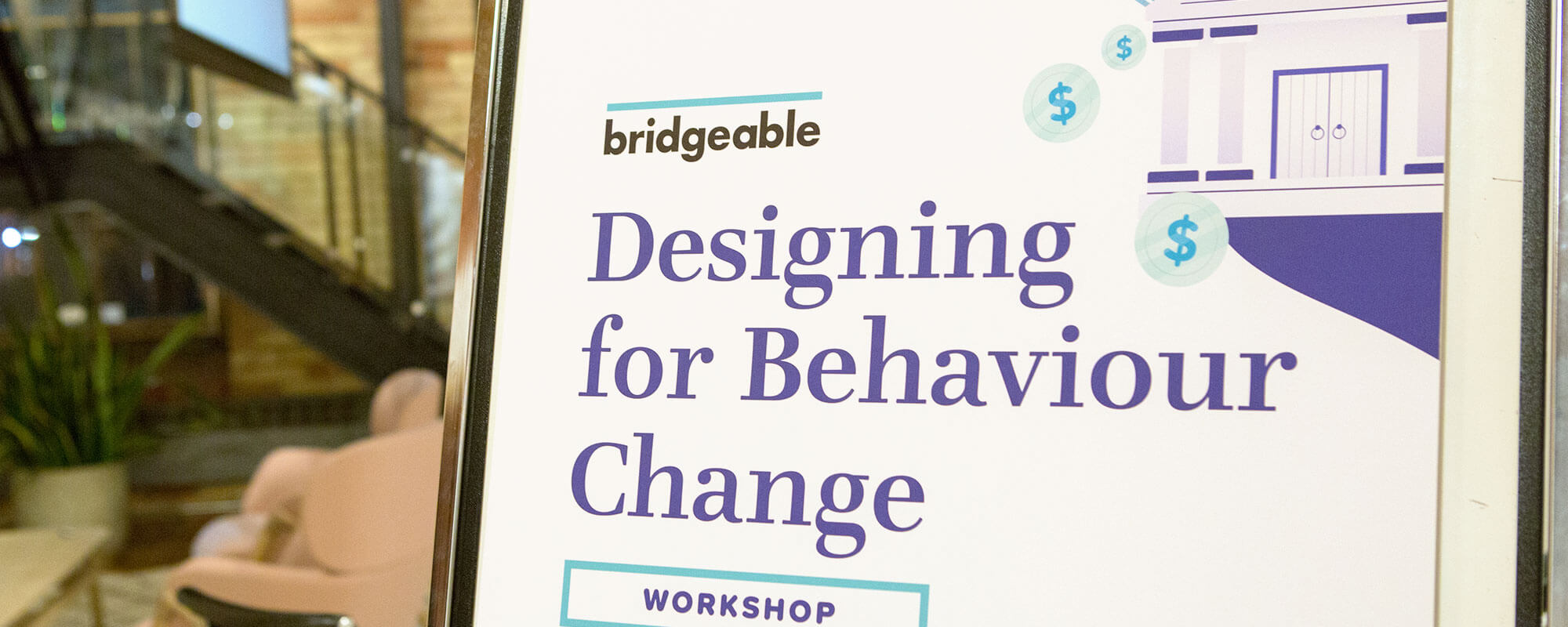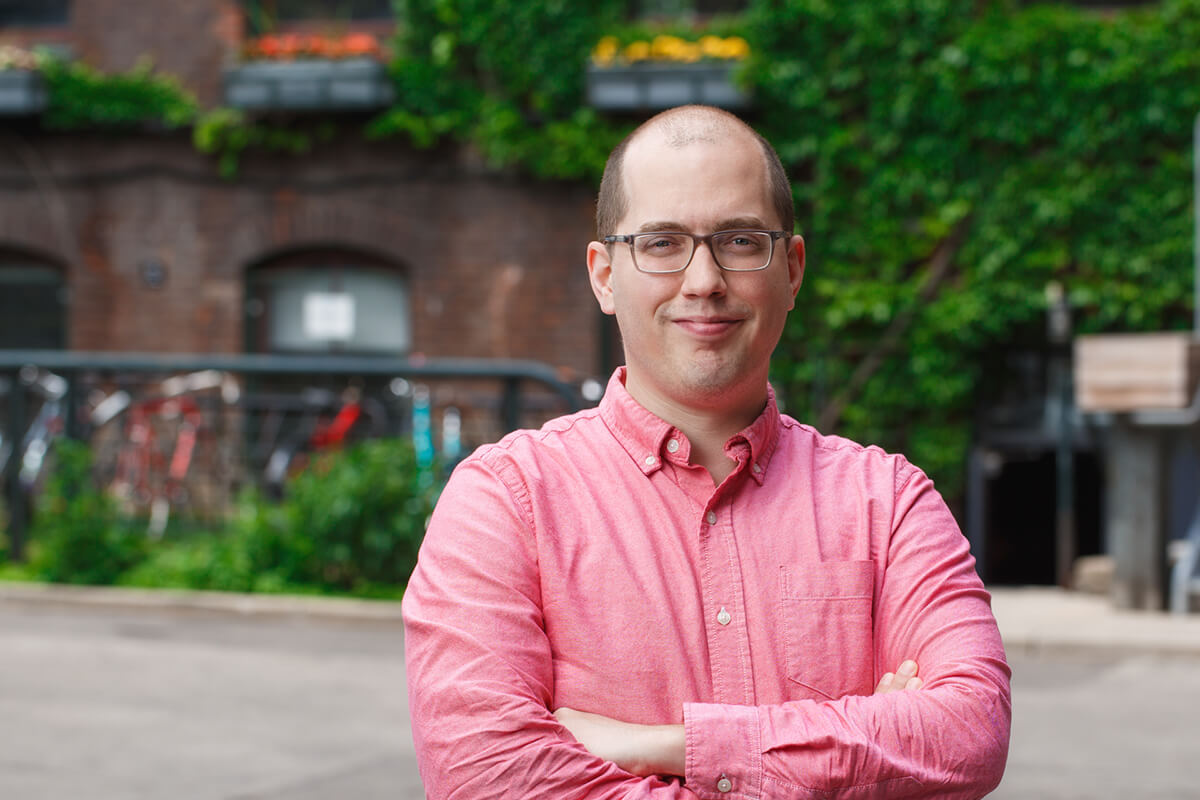
Ideas by Kyle Schruder
Inside our “Designing For Behaviour Change” workshop
Working in small teams, workshop participants were asked to imagine they were part of the Customer Experience Department of a fictional financial institution called CanBank. Their mission was to apply BE principles to improve the service offering for clients nearing retirement.
Author

- Kyle Schruder
- Brand Experience Manager
Last week, a group of 30+ design practitioners from industries such as telecommunications, banking, and finance gathered in the Bridgeable studio in Toronto for a workshop on behavioural economics (BE) and how we as designers can apply it to our process.

Our CEO and founder, Chris Ferguson, opened the event. He gave guests some background on how we came into integrate BE into our day-to-day work, and why having an understanding of its underlying principles can be valuable for service designers.

Chris then handed it over to social scientist Tim MacLeod to walk participants through the theories that drive behavioural economics and the moments where BE can be most helpful to a service designer. According to Tim, “As service design becomes more mainstream, we’re being asked to work on increasingly complex projects where changing entrenched behaviour becomes more difficult.”
He acknowledged that there is a tension between behavioural economics and service design; where service design is a holistic process that looks at the experience from start to finish, behavioural economics zooms in on discrete moments in space and time. However, if service design allows us to uncover the moments that matter in a particular experience, we can then use BE to help us know what to do within those moments.

Finally, Stephanie Rosinski, Design Associate, took to the stage to walk participants through the Designing for Behaviour Change Toolkit, which we have developed to facilitate the integration of BE principles into the design process. The Toolkit consists of frameworks to deploy in both the ideation and testing phases of a project as well as detailed instructions on how to use them both for optimal results.
Working in small teams, workshop participants were asked to imagine they were part of the Customer Experience Department of a fictional financial institution called CanBank. Their mission was to apply BE principles to improve the service offering for clients nearing retirement.

For 40 minutes, participants used the Designing for Behaviour Change Toolkit to ideate possible solutions to this challenge. They learned how to decide which BE principles are at play during a particular moment of decision making, and how to use those principles to help generate design implications that would ultimately feed into ideation. The workshop finished with participants discussing the process and the insights they drew from it.
Feedback from the workshop has been encouraging, with participants stating that they are excited to integrate these new tools into their projects and are looking forward to attending more Bridgeable events in the future.
Are you interested in attending future Bridgeable events and workshops? Fill out this form and we will add you to our event mailing list.
Author

- Kyle Schruder
- Brand Experience Manager

Kyle Schruder
Brand Experience Manager
Related Ideas